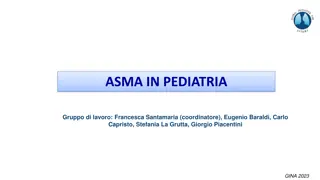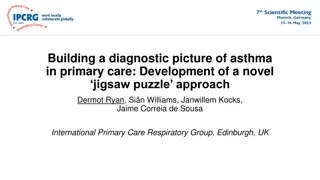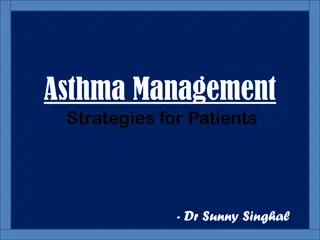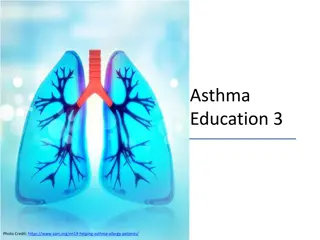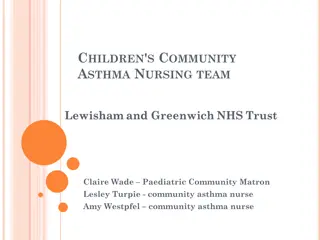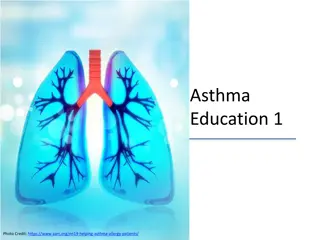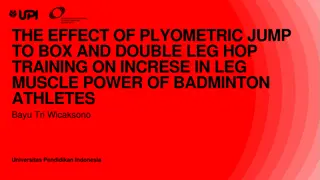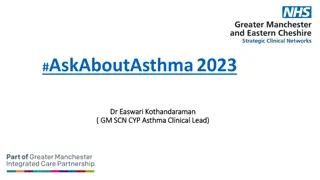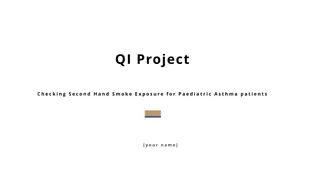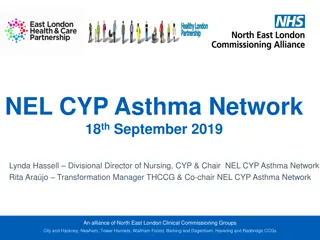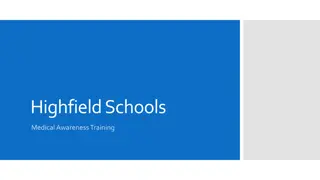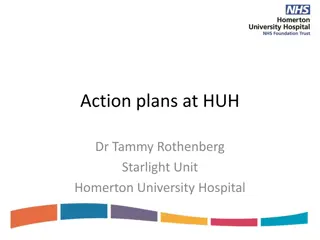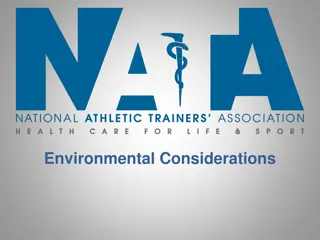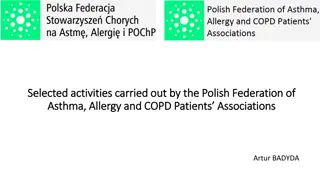Management of Asthma in Athletes: Important Considerations and Treatment
Asthma in athletes can impact performance and health, with triggers like exercise-induced asthma posing challenges. Key considerations include having rescue inhalers available, regular asthma management examinations, and proper warm-ups. Treatment for exercise-induced asthma often involves beta2-agonists and a lengthy warm-up period. It is essential for athletes with asthma to manage their condition effectively to participate in sports without limitations.
Download Presentation

Please find below an Image/Link to download the presentation.
The content on the website is provided AS IS for your information and personal use only. It may not be sold, licensed, or shared on other websites without obtaining consent from the author. Download presentation by click this link. If you encounter any issues during the download, it is possible that the publisher has removed the file from their server.
E N D
Presentation Transcript
Asthma in Athletes Taken From: National Athletic Trainers Association Position Statement: Management of Asthma in Athletes
Asthma A chronic inflammatory disorder of the airways characterized by variable airway obstruction. Can lead to recurrent episodes of wheezing, breathlessness, chest tightness, and coughing; particularly at night or early morning. Airflow limitations are often reversible, but as asthma symptoms continue, patients may develop airway remodeling that leads to chronic irreversible airway obstruction. Severe attacks of asthma can also cause irreversible airflow obstruction that can lead to death.
Asthma Triggers Asthma can be triggered by many stimuli, including: o Allergens (pollen, dust mites, animal dander) o Pollutants (carbon dioxide, smoke, ozone) o Respiratory Infections o Aspirin o NSAIDS o Inhaled Irritants (cigarette smoke, household cleaning fumes, chlorine) o Particulate Exposure (ambient air pollutants) o Exposure to Cold o Exposure to Exercise
Asthma Considerations All athletes with asthma should have a rescue inhaler available during games and practices. Athletic trainers should also have an extra rescue inhaler for each athlete to administer during emergencies. Athletes with asthma should have asthma management examinations at regular intervals, as determined by the PCP or specialist; to monitor and possibly alter therapy. Proper warm-up before exercise may lead to a refractory period of as long as 2 hours, which may results in decreased reliance on medications by some athletes with asthma.
Exercise Induced Asthma (EIA) A temporary narrowing of the airways induced by exercise in which the patient has asthma symptoms. EIA is commonly seen in athletes in all levels of athletic competition. EIA can occur in patients who do not otherwise have asthma. EIA can be a significant disability for an athlete. This is especially true in regards to endurance athletes. EIA is believed to be present in 12-15% of the general populations and as high as 23% in athletes. o Can be more common in urban environments than in rural areas.
National Asthma Education and Prevention Program II Treatment of Exercise Induced Asthma One goal of management is to enable patients to participate in any activity they choose without experiencing asthma symptoms. Exercise-induced bronchospasm (EIB) should not limit either participation or success in vigorous activities Recommended Treatments for EIB include: o Beta2-agonists will limit EIB in more than 80 percent of patients. Short acting inhaled beta2-agonists used shortly before exercise (or as close to exercise as possible) may be helpful for 2 to 3 hours. Other medications may be considered as well. Contact your asthma specialist. o A lengthy warm-up period before exercise may benefit patients who can tolerate continuous exercise with minimal symptoms. The warm- up may preclude a need for repeated medications.
Institutional Policies on Asthma Management Insert specific institutional policy on identification and specific asthma management methods (include medication use recommendations) and information for coaches
Resources Management of Asthma in Athletes http://www.nata.org/sites/default/files/MgmtOfAsthmaInAthlet es.pdf



